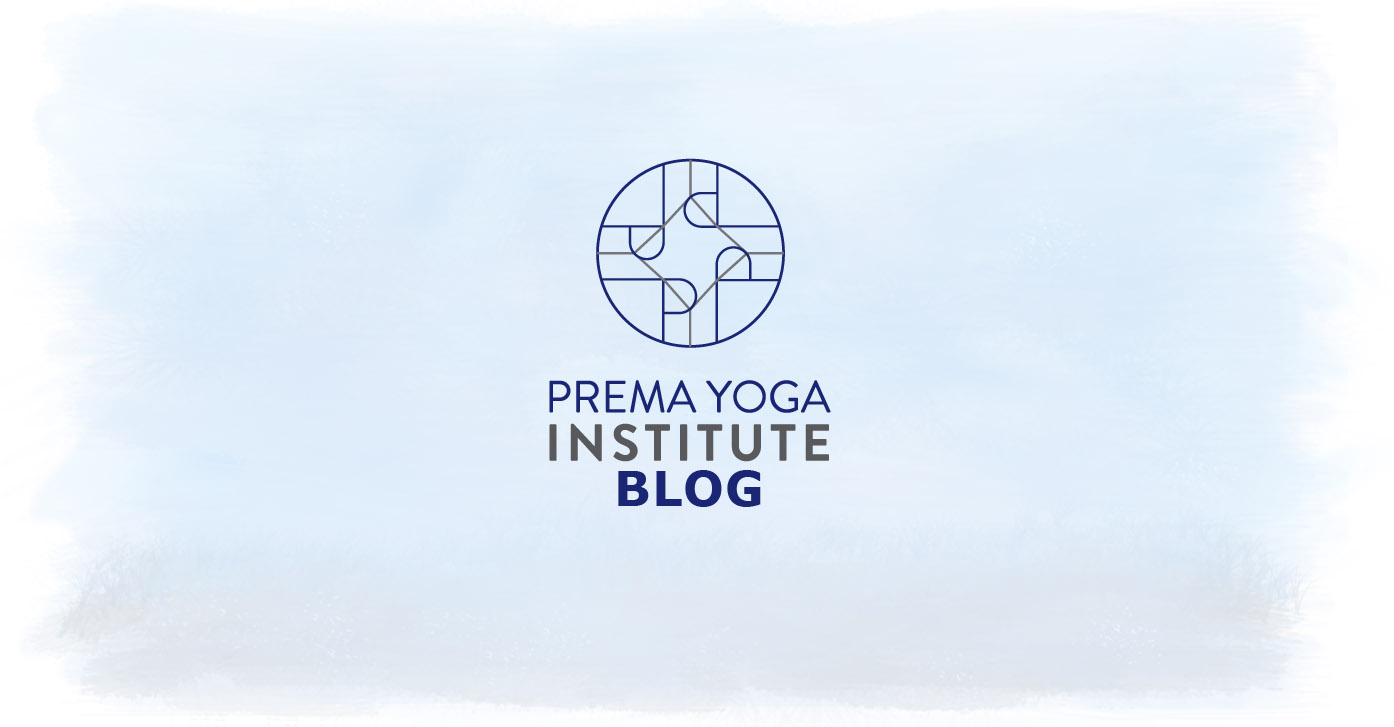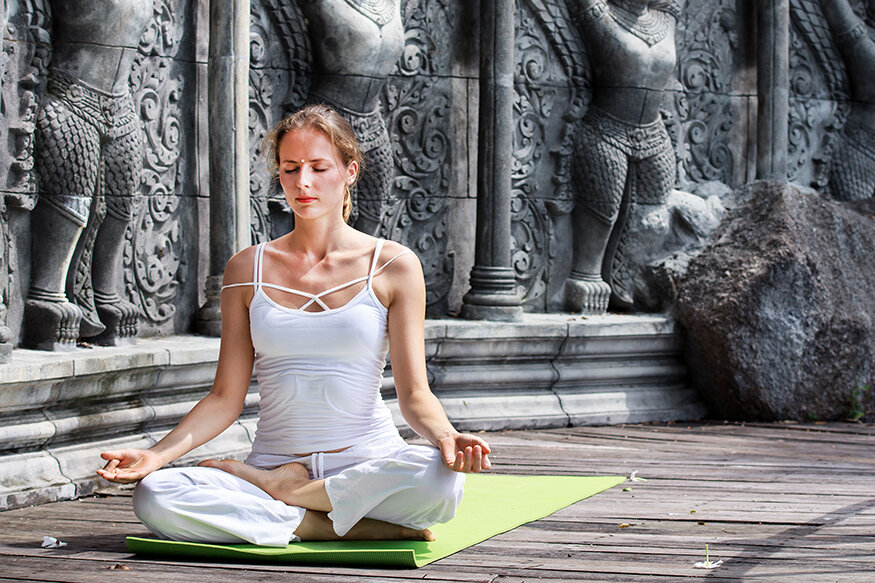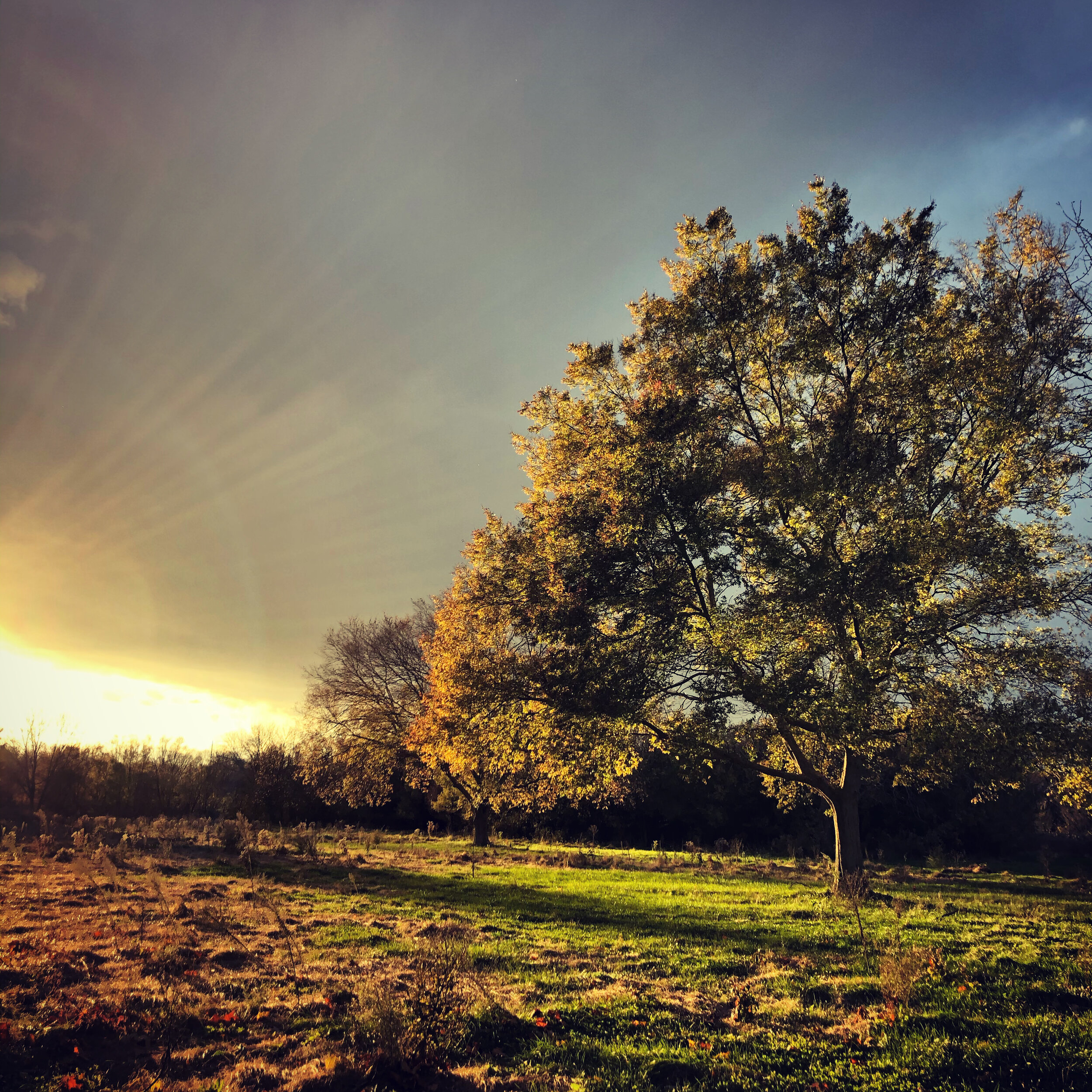
4 Tips for Choosing Advanced Yoga Teacher Training Programs
4 Tips for Choosing Advanced Yoga Teacher Training Programs
After completing your RYT200 training, you meet the minimum requirements to start your own personal yoga practice. However, many yoga instructors discover that the 200-hour yoga training program is not enough to help them stand out and decide it is wise to invest in an advanced yoga teacher training program.
If you feel like you want to continue your yoga teacher training, go deeper into your craft, and set yourself apart from other yoga teachers, then it might be time to find the right advanced yoga teacher training course for you. You will also want to ensure you choose a yoga accreditation program that you will enjoy because you are likely to be spending 100 to 300 hours to reach your goals.
To help you find the best advanced yoga teacher training courses, Prema Yoga Institute has put together some helpful hints and tips on what to look for in a continuing education program for yoga instructors.
1. Double Check Certifications and Accreditations
The first thing you need to do when looking into advanced yoga teacher training is ensure the training course is certified by the Yoga Alliance. There are many wonderful non-accredited yoga teacher training courses out there, but the benefits of Yoga Alliance accredited courses will prove helpful down the road.
You should also investigate the certifications and memberships held by the teachers at your program. This can help you get an idea of their experience, specialties, and philosophy of yoga.
For example, Prema Yoga Institute lists all of its faculty bios on its Faculty page. Give the faculty bios a read and research the instructors online to see if you think they would be a good fit for you. Often, accredited yoga instructors will have free videos for you to watch – this is a great way to get a feel for an instructor before you commit to a yoga teacher training course.
2. Narrow Down Your Teaching Focus
Before you can find the perfect yoga teacher training course for you, you must know what you want out of your yoga teacher training. Do you want to be a better teacher in a specific area? Learn more about the history of yoga? Or maybe you’re looking to level-up your spiritual growth.
Whatever your goals, one of the best ways to find the right advanced yoga teacher training program is to look at the yoga courses’ outline or syllabus. While the 200-hour RYT pretty much covers the general basics, as you get into advanced yoga training, things tend to be a bit more niche.
By checking out the yoga training program’s curriculum, you can get a better idea of what you will be focusing on. Some advanced yoga programs spend a lot of time on anatomy and posture, some go deep into the history and philosophy of yoga, and other programs are all about spirituality and healing.
Ask yourself who your ideal client is and how you can use advanced yoga training to help them. Once you discover a group you would enjoy serving, your niche may become clearer.
Remember to take your time. You may go down several different paths before narrowing down your niche and that is okay. Enjoy exploring your skills and passions as a yoga instructor.
3. Consider Whether You Prefer In-Person or Online Advanced Yoga Training Courses
This is a big question to ask yourself when looking for an advanced yoga teacher training course, especially in the wake of COVID-19 and the rise of online courses. Is it important to you to be able to go to an in-person yoga class with a hands-on teacher? Or does an online yoga training format work better for you?
Of course, there’s no one-size-fits-all answer for this question, so it really depends on your preferences and schedule. If you’re the type of person who wants a hands-on, intense yoga training experience, a yoga retreat might be the right choice for you. But if you want to go at your own pace in your own space (or if you are practicing social distancing), online yoga training courses might be a better fit. Additionally, some yoga training courses are available both online and locally.
One thing is certain, online yoga courses have recently been elevated to a whole new level due to remote learning necessities. It may be wise to consider taking full advantage of these online yoga teacher training courses while they are available.
4. Ask the Right Questions
Before you choose an advanced yoga teacher training program, do some background research and make sure to ask the right questions. Some questions to try and answer:
What teachers do they work with? Are these teachers experienced in aspects of yoga I want to learn more about?
What do other students have to say about this program? Are there reviews or testimonials I can check out?
Is there a way to contact the program with questions before investing in their courses?
Never be afraid to contact a program in advance. A good program will be willing to answer your questions before you invest in their advanced yoga training courses.
Finding the Best Advanced Yoga Teacher Training Programs
These days, there are so many advanced yoga teacher training programs out there that it can be tough to know which one is the right choice. But if you use these tips and tricks, you should be able to find the perfect program for you.
If you found this information useful, visit our Blog often or subscribe to our Mailing List for similar content.
Currently, Prema Yoga Institute is offering online study options for ALL of our yoga trainings in 2021. PYI has a variety of programs with a focus in therapeutic yoga and aging bodies. Should we be able to study together in person in late 2021, you can choose the online option of live study, or join us in person at our studio in New York city.
We hope you’ll consider Prema Yoga Institute for your online advanced yoga training program. We’re an accredited program based in New York city, teaching students around the globe through online classes. Contact us to learn more about how we can help you advance your yoga practice and teaching!
Building Precious Immunity
Hug a tree to build your Ojas, they said.
My teachers in ‘Ayurveda and Immunity’ at Prema Yoga Institute are sharing ways to retain and build your vigor and resiliency that is the root of our immunity.
Ojas is an Ayurvedic concept and refers to that shield that helps us ward off stress and sickness. When our Ojas is good we have a glowing complexion, a sense of well-being, the ability to endure, and a feeling of lightness in body and mind.
Hug a tree to build your Ojas, they said.
Tree, photo by A.MacMullan
My teachers in ‘Ayurveda and Immunity’ at Prema Yoga Institute are sharing ways to retain and build your vigor and resiliency that is the root of our immunity.
Ojas is an Ayurvedic concept and refers to that shield that helps us ward off stress and sickness. When our Ojas is good we have a glowing complexion, a sense of well-being, the ability to endure, and a feeling of lightness in body and mind.
A person with high Ojas
On the other hand, when we have low Ojas, we feel depleted. Signs of low Ojas include:
Dry skin
Cold hands and feet
Sensitivity to light and sound
Muscle or joint pain
Heaviness in body and mind
Drowsiness or fatigue
Tendency to get sick frequently
Lack of focus
Anxiety
Constant negative attitude
“We must guard our Ojas like a savings account,” Ayurvedic practitioner Julia Abramova says, taking care not to withdraw too much and potentially experience depletion and eventually disease.
So how to you build up your Ojas if it’s depleted?
Recipe by Julia Abramova, Jyoti Yoga and Healing
Strengthen your digestive fire (get on a good eating routine, don’t overeat, etc)
Eat Ojas-building foods that are sweet, heavy, smooth, cool, stable (avocados, bananas, soaked dates, soaked raisins, fresh figs, sweet potatoes, mung beans, ghee, milk, almonds)
Do restorative yoga
Rest! All healing begins in rest.
Practice Abhyanga or Self-massage with Oils
Practice Pratyahara - disconnect from sensory overload
Walk in the moonlight
Forest bathing
So here’s a suggestion: go stand in nature and put yourself on “receive” mode, taking in the soothing sounds, gentle air, and life force of the beings around you. Drink in the beauty that surrounds you. Build your Ojas!
Sunsets are a marvelous way to drink in Ojas
Resources:
Ayurveda and Immunity Course, Prema Yoga Institute
Julia Abramova, E-RYT500, Founder and Program Director of Jyoti Yoga & Healing, Ayurvedic Practitioner, Certified Yoga Therapist (C-IAYT)
——————————————————————————————————-
Ann Grace MacMullan is a yoga teacher and owner at Team Sun Wellness, a Philadelphia-based company whose mission is to help people of all walks of life take care of themselves through mindful movement and focused breathing. She is also a yoga therapy student at Prema Yoga Institute.
.
The Truth About Ghee
Over the summer, I took an Ayurveda course as part of my Yoga Therapy certification with Prema Yoga Institute, and was introduced to the concept of ghee, or clarified butter. We needed it to make one of our recipes, so I bought a jar for some astronomical amount, like $13. That first jar was a good investment!
Over the summer, I took an Ayurveda course as part of my Yoga Therapy certification with Prema Yoga Institute, and was introduced to the concept of ghee, or clarified butter. We needed it to make one of our recipes, so I bought a jar for some astronomical amount, like $13. That first jar was a good investment!
My first batch of homemade ghee, July 2020
Ghee is a staple of the Ayurvedic diet. Some dishes call for one tablespoon of ghee per person! So what is it, and why is it good for you? Is it good for you? Ghee is just butter (use organic, unsalted, grass-fed butter) that is slowly cooked down and strained to remove milk solids and other impurities. After it cools, the result is a beautiful, rich golden color.
Some facts about ghee:
It has been used in Indian and Pakistani cultures for thousands of years.
Ghṛta (घृत) is a Sanskrit technical term translating to “ghee” (clarified butter), and is used throughout Ayurvedic literature. The term comes from the Sanskrit word meaning “sprinkled or illumined.”
Ghee was created to prevent butter from spoiling during warm weather. Given that its milk solids have been removed, it does not require refrigeration and can be kept at room temperature for several weeks.
Ghee and butter are comprised of nearly 100% fat, but ghee may be the better choice for people with lactose or casein sensitivities, since it is free of both.
Eating fat-rich foods like ghee can increase the “bioavailability” and absorption of some healthy vitamins and minerals.
Ghee is rich in butyric acid, a short chain fatty acid that promotes a positive immune response within the body, to support healing of inflammation and optimal digestion.
Its smoke point is 485°F (250°C), which is substantially higher than butter’s smoke point of 350°F (175°C). Therefore, when cooking at very high temperatures, ghee has a distinct advantage over butter.
If you’re healthy and looking to add more fat to your diet, ghee may be a fine option; no evidence suggests that it’s healthier than butter overall.
Ghee solidifies when it cools, and doesn’t need to be refrigerated.
What Ayurveda says about Ghee:
Ghee is a digestive. It helps to improve absorption and assimilation.
It nourishes ojas, tejas and prana.
It is good for improving memory and lubricates the connective tissue.
Ghee makes the body flexible and, in small doses, is tridoshic.
Ghee is a yogavahi—a catalytic agent that carries the medicinal properties of herbs into the seven dhatus or tissues of the body.
Ghee pacifies pitta and vata and is acceptable, in moderation, for kapha.
Persons who already have high cholesterol or suffer from obesity should be cautious in using ghee.
Ghee is not to be used when there are high ama (toxic) conditions.
If you’re not sure what your dosha is, you can take a Dosha Quiz.
You can’t see it, but ghee is holding this meal together, just like it does your insides.
Personally, I have noticed that I enjoy the preparation and the eating of my food more with ghee in the mix, used in place of vegetable oils to make eggs, stir fry, or spread on bread or crackers - I have even put ghee in hot beverages. I used to ‘say no’ to butter altogether, but why? A little fat is good for you, if you’re healthy! The taste is wonderful, and I feel more oleanated from the inside. I even use ghee on my skin sometimes.
Recipe from Ayurvedic Cooking for Self-Healing, Usha Lad and Dr. Vasant Lad
I made my first homemade batch in July, and now it's a regular part of my routine and diet. If you want to make your own ghee, it's really easy! Check out Dr. Vasant Lad's Ghee Recipe. In case you're wondering, I have not put on any unwanted pounds - in fact, the opposite has occurred, but probably because I have mostly eliminated processed food from my diet, and am consuming more vegetables and fruit.
If you want yummy recipes and easy-to-understand information on an Ayurvedic diet and perspective, I highly recommend Ali Cramer's book, Modern Ayurveda: Rituals, Recipes, & Remedies for Balance. I have enjoyed her recipe for hearty, nourishing kichadi that uses ghee a few times already!
Bring-Me-Back Kichadi featuring plenty of ghee
Final fact: I have to HIDE THE GHEE JAR from my husband.
Sources:
Ayurveda 100 hour course, Prema Yoga Institute
Ayurvedic Cooking for Self-Healing, Usha Lad and Dr. Vasant Lad
What is Ghee and Why is it a Staple of Indian Healthcare - The Observer
Modern Ayurveda: Rituals, Recipes, & Remedies for Balance by Ali Cramer
——————————————————————————————————-
Ann Grace MacMullan is a yoga teacher and owner at Team Sun Wellness, a Philadelphia-based company whose mission is to help people of all walks of life take care of themselves through mindful movement and focused breathing. She is also a yoga therapy student at Prema Yoga Institute.
.















